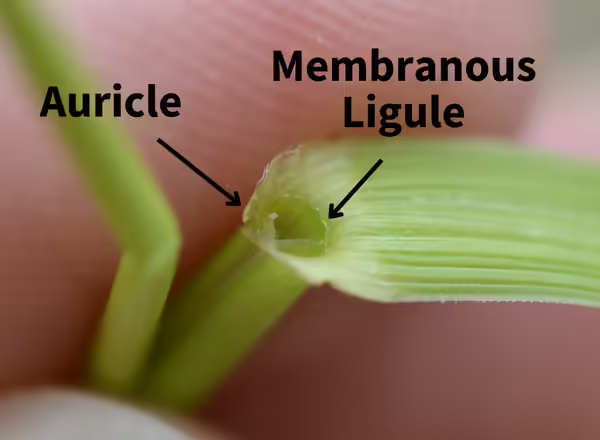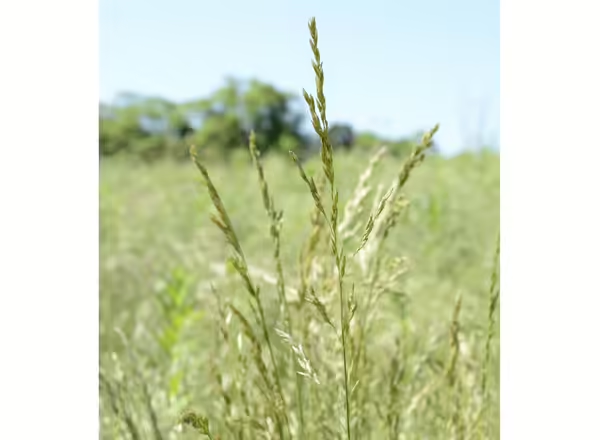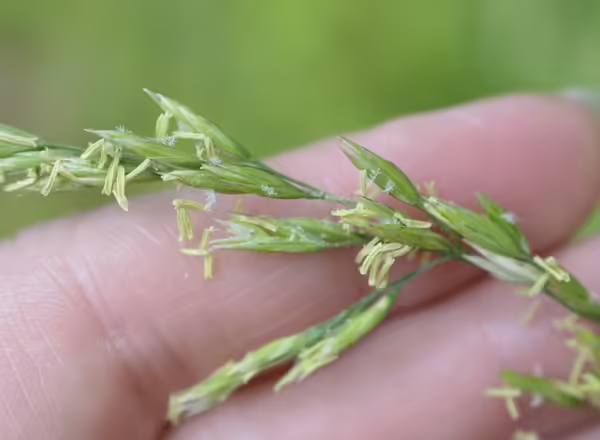A popular forage and lawn grass
A common non-native grass found in restoration sites is Tall Fescue, Schedonorus arundinaceus.
Tall Fescue has been widely used as a forage grass, however its widespread infection with a fungus that grows inside the plant has complicated its forage use. Fescue is also a popular lawn grass, especially in the southern part of Illinois. When pastureland is converted into a prairie restoration or wildflower planting, Tall Fescue can remain and be difficult to remove.
Identifying characteristics
Tall Fescue is a cool-season bunchgrass. It greens up early in the spring and by late May is already in flower. It grows between 2-5 feet tall if unmowed. Its leaves are stiff and sharply angled at the collar region to be held close to 90 degrees away from the stem. You can find a short membranous ligule and blunt auricles (shorter and rounder than other grasses), which are arm-like extensions of the leaf sheath.
As Tall Fescue is starting to bloom, it might be tricky to tell what type of inflorescence it has. As the flowers are developing, it looks like a spike, but once fully developed branches become apparent, which means it is a panicle. The spikelets of this grass are oval shaped with pointed tips and short awns. They can be green to reddish in color. In bloom, you can find yellow anthers and white stigmas pushed out of the spikelets.
Need a refresher on grass identification terms, like ligule and spikelet? Check out this blog post!





Tall Fescue, Schedonorus arundinaceus, is a non-native, cool season grass found in fields, disturbed habitats, and planted as a lawn grass. Tall Fescue is a bunchgrass that grows two to five feet tall. Its leaves are stiff and sharply angled at the collar to be held about 90 degrees...